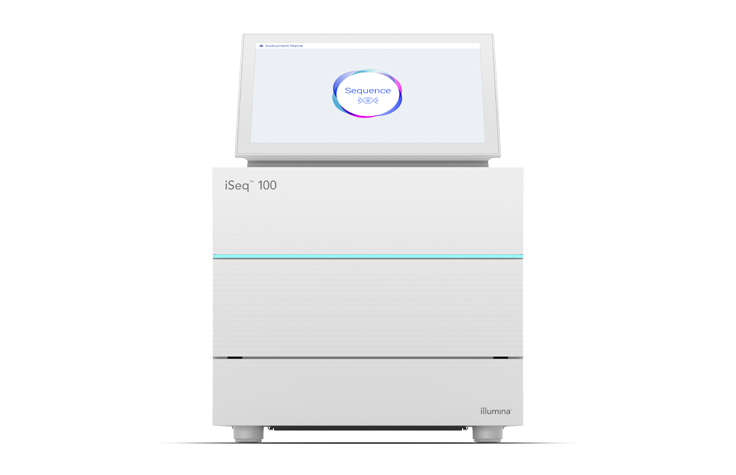유전체 감시 시스템

감염병 위협을 식별하고 추적하는 NGS 방법
차세대 시퀀싱(NGS)은 유전체 감시에 혁명을 일으켜 바이러스, 세균, 진균, 기생충에 의해 유발되는 알려진 감염성 질환과 새로운 감염성 질환을 모두 검출하고 추적할 수 있게 해 주었습니다. 이 기술을 통해 병원균을 분자 수준에서 연구하여 전 세계 개체군에서 병원균의 행동과 진화에 대한 인사이트를 얻을 수 있습니다.
감염성 질환의 유전체 감시 시스템에 사용되는 다양한 NGS 방법이 있으며, 각 방법은 그 자체의 장점과 어려움을 가지고 있습니다. 방법의 선택은 관심 대상 병원체, 샘플 종류 및 데이터 요구 사항에 따라 달라집니다. Illumina는 각 방법에 대한 고급 라이브러리 준비, 시퀀서, 데이터 분석 도구를 제공하므로 이 분야의 연구자들에게 신뢰할 수 있는 선택입니다.
병원체 감시 시스템 접근법
NGS를 이용한 병원체의 유전체 감시 시스템은 병원체를 검출하는 데 있어 탁월한 확장성, 속도, 정확성을 제공하여 공중 보건을 보호하는 데 필요한 자신감을 제공합니다. 병원체 검출을 위한 접근법 선택은 단일 유전체 분석, 여러 병원체 검출, 또는 병원체 발견을 포함하는 랩 능력 및 검사 요구 사항에 따라 달라집니다.
단일 유전체
단일 유전체 시퀀싱은 알려진 표적을 식별하기 위한 최적의 방법입니다. 병원체가 배양 플레이트 또는 일차 샘플 상의 분리된 미생물 집락으로부터 유래하는지 여부에 관계없이, 알려진 단일 유전체만 분석되고 있습니다.
다중-병원체
특정 병원체가 존재하는 것으로 의심되는 경우 또는 일차 샘플로부터 여러 알려진 병원체의 감시 시스템에는 하이브리드 포획 인리치먼트 용액이 이상적입니다.
병원체 발견
이는 일차 샘플에 대한 편향되지 않은 분석이 필요할 때 유용한 접근법입니다. 복잡한 미생물 군집에 존재하는 유전 물질의 샷건 DNA/RNA 시퀀싱(메타지노믹 또는 메타트랜스크립토믹) 분석은 사전 지식 없이 군집의 종 수준 조성을 밝혀낼 수 있습니다.
NGS 병원체 감시 시스템 방법 비교
분리주의 전장 유전체 시퀀싱
정확한 참조 유전체, 미생물 식별 및 비교 유전체 연구를 생성하기 위해서는 전체 세균, 바이러스, 기타 미생물 유전체의 시퀀싱이 중요합니다. NGS의 성능은 멀티플렉싱을 통해 저주파 변이 및 유전체 재배열을 식별할 수 있게 합니다.
앰플리콘 시퀀싱
알려진 바이러스를 검출하고 완전하게 특성 규명합니다. 앰플리콘 접근법을 통한 전장 유전체 시퀀싱은 작은 유전체를 가진 알려진 바이러스에 이상적입니다. 이 방법은 PCR 앰플리콘의 울트라 딥 시퀀싱을 사용한 관심 유전체 영역 분석을 포함합니다.
하이브리드 캡처 스크리닝
코로나바이러스, 독감 바이러스 및 기타 병원성 유기체와 관련 항생제 내성(항균제 내성, AMR) 대립 유전자를 검출하고 특성 규명합니다. 이러한 인사이트는 공중 보건 공무원이 발병을 모니터링하고 감염 통제 전략을 최적화하는 데 도움이 될 수 있습니다. 이 방법은 표적 특이적 프로브에 대한 하이브리드화를 통해 관심 유전체 영역을 캡처합니다.
샷건 메타지노믹
주어진 샘플의 모든 유기체를 포괄적으로 시퀀싱하고 Mpox virus와 같은 신종 또는 신종 병원체를 식별합니다. 이 NGS 방법은 발병 조사를 가속화하고 새로운 랩 검사 개발을 지원할 수 있습니다.
| 검사 요구사항 | 분리주의 전장 유전체 시퀀싱 | 앰플리콘 | 하이브리드 캡처 | 샷건 메타지노믹스 |
|---|---|---|---|---|
| 속도 및 총 소요 시간 | ||||
| 확장 가능 및 비용 효과적 | ||||
| 무배양 | ||||
| 새로운 병원체 식별 | ||||
| 전파 추적 | ||||
| 돌연변이 검출 | ||||
| 동시 감염 및 복합 질환 식별 | ||||
| 항균제 내성 검출 |
랩 검사 요구사항을 충분히 충족
랩 검사 요구사항을 일부 충족
NGS 워크플로우 파인더
다음 워크플로우에서 추측을 배제하세요. NGS 워크플로우 파인더는 개인화된 솔루션 권장 사항과 리소스를 제공하므로 안심하고 순서를 지정할 수 있습니다.
지금 바로 연구에 적합한 차세대 시퀀싱(NGS) 워크플로우 확인하기유전체 감시 시스템 FAQ
주요 리소스
MiSeq i100을 사용한 폐수 감시
이 앱 노트는 MiSeq i100 Series 및 Urinary Pathogen ID/AMR Panel이 공중 보건을 위한 폐수 감시를 지원하기 위해 샘플에서 항생제 내성 유전자(ARG) 및 세균 병원체를 검출하고 특성 확인하기 위한 빠르고 포괄적인 워크플로우를 제공하는 방법을 설명합니다.
폐수 감시로 새로운 감염병 추적
이 애플리케이션 노트는 공중 보건 노력을 뒷받침하는 폐수 감시에서 광범위한 바이러스 검출을 위한 NGS 워크플로우를 간략히 설명합니다. MiSeq i100 시리즈는 빠른 응답을 위해 당일 결과를 제공합니다.
질병 및 AMR 검출을 위한 표적 인리치먼트
이 주문형 웨비나에서는 감염성 병원체 및 항균제 내성(AMR) 마커를 조기에 보다 포괄적으로 검출하는 것이 환자 관리 및 치료를 최적화하는 데 어떻게 도움이 되는지 설명합니다.
주요 제품

COVIDSeq 군
COVIDSeq assay 및 COVIDSeq Test는 공중 보건 랩에서 SARS-CoV-2의 새로운 균주를 식별하는 데 도움이 되도록 설계된 앰플리콘 기반 차세대 시퀀싱(NGS) assay입니다.

iSeq 100
iSeq 100 System은 CMOS(Complementary Metal-Oxide Semiconductor, 상호보완적인 금속 산화막 반도체) 기술의 속도와 가격 적정성 및 Sequencing by Synthesis(SBS) chemistry의 정확성을 활용합니다.

Illumina Respiratory Virus Enrichment Kit
Illumina 호흡기 바이러스 인리치먼트 키트를 사용하면 연구자들이 SARS-CoV-2 및 인플루엔자 A/B 바이러스를 포함한 40개 이상의 중요한 호흡기 바이러스에 대한 전장 유전체 차세대 시퀀싱(NGS) 데이터를 획득할 수 있습니다.
Viral Surveillance Panel
연구자들은 바이러스 감시 시스템 패널과 Illumina RNA Prep with Enrichment 키트를 사용하여 SARS-CoV-2, 인플루엔자, Mpox Virus, Poliovirus 등 공중 보건에 위험이 높은 66개 바이러스의 특성을 규명할 수 있는 전체 유전자 시퀀싱(WGS) 데이터를 얻을 수 있어 선제적이고 광범위한 병원체 감시 시스템에 활용할 수 있습니다.감염병 감시 시스템 적용
코로나바이러스 감시 시스템
NGS는 새로운 코로나바이러스 균주에 대한 편향되지 않은 식별을 제공합니다. Illumina는 SARS-CoV-2 코로나바이러스 돌연변이의 신속한 검출을 제공하여 효율적인 시퀀싱 요구 사항을 충족합니다.
결핵 감시 시스템
결핵 검출, 특성 규명, 분석을 위한 통합 NGS 기반 솔루션에 대해 알아보세요.
폐수 감시 시스템
폐수 감시 시스템은 폐수에서 발견되는 병원균을 검출, 식별, 특성화하는 방법입니다. 이 방법은 군집 수준에서 질병 발생 및 기타 위협을 모니터링하는 데 도움이 되는 데이터를 제공합니다.
Healthcare-associated infection surveillance
NGS로 구동되는 랩과 클리닉은 대규모 병렬 워크플로우를 사용하여 전례 없는 속도와 확장성으로 유전체 의료 관련 감염(HAI) 관련 연구를 수행할 수 있습니다.
항균제 내성
NGS가 조기 검출, 발병 대응 및 임상 연구 분야에서 항균제 내성 연구를 어떻게 강화하는지 더 알아보세요.
함께 많이 구매된 제품
필요에 맞는 감염병 감시 시스템 솔루션을 찾는 데 도움을 받으세요.
유전체 감시 시스템 고객 사례
남아프리카에서 약물 내성 결핵과의 싸움
남아프리카의 요하네스버그 국립 전염병 연구소 결핵 센터의 과학 책임자인 Shaheed Vally Omar는 차세대 시퀀싱이 MDR-TB를 탐지하고 추적하는 데 도움이 될 수 있다고 믿습니다.
아프리카에서 병원체 유전체학의 잠재력 실현
CERI의 창립 이사이자 Stellenbosch 대학교 및 KwaZulu-Natal 대학교의 교수인 Tulio de Oliveira 교수는 병원체 유전체 감시 시스템을 공중 보건 도구로 사용하고 그 미래에 대해 이야기합니다.
결핵 감시 시스템을 위해 유전체학을 사용하는 뭄바이 랩 내부
Camilla Rodrigues 박사는 인도 뭄바이의 민간 비영리 병원인 P. D. Hinduja Hospital & Medical Research Centre에서 결핵과 싸우고 있습니다. 약물 내성 결핵의 증가하는 위협에 대한 그녀의 생각과 모든 환자에게 치료를 제공하겠다는 그녀의 비전에 대해 읽어 보세요.
주요 유전체 감시 시스템 출판물
Mpox virus 멀티플렉싱 PCR 앰플리콘 시퀀싱(PrimalSeq) V.2.
Mpox virus에 대한 앰플리콘 기반 시퀀싱(PrimalSeq) 접근법에 대해 읽어 보세요. Mpox virus는 메타유전체 시퀀싱과 비교하여 저농도 바이러스 샘플로 유전체 커버리지의 깊이와 폭을 개선했습니다.
Mpox virus의 2022년 다국가 발병에서 계통유전체 특성 확인 및 소진화 징후
과학자들이 유전체 및 필로체노믹 데이터를 사용하여 2022년 Mpox virus 발병 균주의 진화 궤적과 인간 적응의 잠재적 메커니즘 및 표적에 대한 인사이트를 얻는 방법을 읽어 보세요.
하수의 유전체 시퀀싱은 지역적으로 만연한 SARS-CoV-2 변이를 검출함
이 출판물에서 과학자들은 폐수 시퀀싱을 통해 역학 감시 시스템을 수행한 방법과 특정 바이러스 균주를 추적할 수 있는 능력을 기술합니다.
조기 시점에 새로 출현하는 균주를 검출하기 위해서는 규모에 따른 유전체 감시 시스템이 필요합니다.
Illumina 과학자들이 인구집단의 모든 균주 중 1% 미만일 때 새로운 SARS-CoV-2 균주를 검출하는 데 필요한 샘플 채취를 평가하는 모델을 개발한 방법을 알아보세요.
감시 시스템 및 프로브 캡처 기반 NGS를 통한 박쥐 코로나바이러스 발견
베이트를 사용하여 코로나바이러스를 표적으로 하는 포획 기반 NGS 접근법에 대해 더 알아보세요. 여기서 과학자들은 박쥐 코로나바이러스에 대한 표적, 비용 효과적인 대규모 유전체 수준 감시 시스템의 실행 가능성을 보여줍니다.
Illumina Microbial Amplicon Prep for viral surveillance
애플리케이션 노트를 다운로드하여 효과적인 감시 시스템을 위해 다양한 바이러스 유전체 전반에 걸쳐 포괄적인 커버리지를 얻는 방법을 알아보세요.

